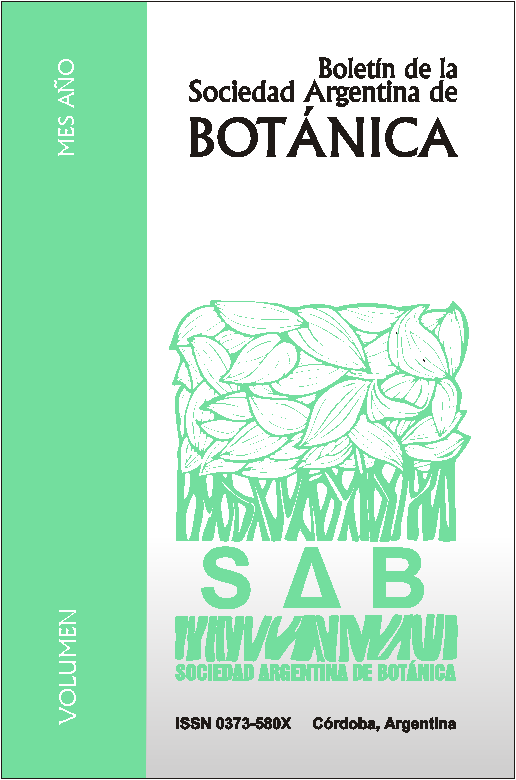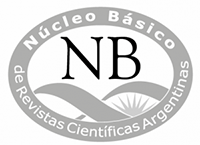Susceptibilidad del Olmo (Ulmus pumila), y de cinco especies arbóreas nativas del centro-sur de la Provincia de Córdoba (Argentina), a la infección por Pleurotus ostreatus (Agaricales: Pleurotaceae).
DOI:
https://doi.org/10.31055/1851.2372.v53.n1.19861Palavras-chave:
Celtis ehrenbergiana, control biológico, Geoffroea decorticans, Prosopis alba, Schinus fasciculatus, Vachellia caven.Resumo
Las invasiones biológicas avanzan sobre los ecosistemas provocando grandes modificaciones sobre su estructura y procesos ecológicos. Ulmus pumila L., es una especie exótica que se encuentra desarrollando procesos de invasión en Argentina y hasta el momento se han utilizado técnicas mecánicas y químicas para su control en los sitios afectados. Actualmente el control biológico se constituye como una nueva alternativa. En el presente trabajo se evaluó la capacidad de infección de Pleurotus ostreatus,sobre plantas de U. pumila con la finalidad de recabar y aportar información de base para generar nuevas opciones para su control. Se realizaron ensayos de laboratorio para determinar el éxito de establecimiento de Pleurotus sobre estacas de especies arbóreas nativas del distrito biogeográfico del Espinal y sobre U. pumila. Se encontró que P. ostreatus tuvo la capacidad para colonizar externamente todas las especies evaluadas, aunque solo en estacas de U. pumila pudo completar el ciclo de vida. Finalmente, el estudio anatómico de su leño indicó que U. pumila es la especie con mayor proliferación de micelio e incluso con formación de clamidosporas. De esta manera se puede afirmar que ésta especie
exótica es más susceptible a la infección fúngica que las especies nativas utilizadas.
Downloads
Publicado
Edição
Seção
Licença
Proporciona ACESSO ABERTO imediato e livre ao seu conteúdo sob o princípio de tornar a pesquisa livremente disponível ao público, o que promove uma maior troca de conhecimento global, permitindo que os autores mantenham seus direitos autorais sem restrições. 
Material publicado em Bol. Soc. Argent. Bot. é distribuído sob uma licença Creative Commons Attribution-NonCommercial-ShareAlike 4.0 International License. 











